I had passed this way many times, heading to points north on Highway 17. It has only been a handful of times when I have stopped on the two and a half mile distance across the Santee Delta between the North and South Santee Rivers. Once I came with Dennis Forsythe, who led a group of people with the hope of seeing a swallow-tailed kite over the Delta. We did, and it was my first sighting of this spectacular raptor. On this April 4th I planned to do a hike around the perimeter dike. I hoped to slip in the rapidly closing window between the closed migratory waterfowl season in the Santee Delta Wildlife Management Area (east), and the biting insect season. The reputation of the Delta for a plague of mosquitoes and flies is legendary.
This area is very similar to the bike loop trail around the dikes at Santee Coastal Reserve. My son Eliot and I had traveled there a few years ago, and on our arrival we were greeted by a swarm of deer flies bouncing off our rear window. After racing away on our bikes from this bloodthirsty horde, we ran a gauntlet on our ride around the dikes that included more flies and mosquitoes, snakes, alligators, and even some feral hogs running across the wetlands. In discussing the plan for this Delta hike with my friend Ben Moise, he recommended I carry a stick.
The ride up Hwy 17 was eventful right before the Delta when the evidence of a huge wildfire stood out with the blackened forest on either side of the road.
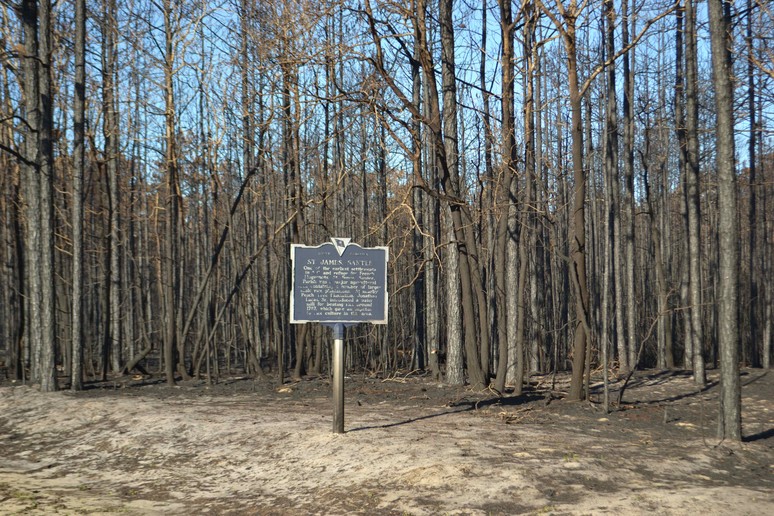
About 2600 acres had burned, and the continuing investigation pointed to arson. I arrived at the empty parking area before the North Santee River by 9AM. It was warm already, with predicted highs in the mid-80’s, and winds were to come up from the south at 20-25 knots. I did expect mosquitoes, and was dressed in long sleeves and hat. Several welcomed me in the first one hundred yards, but so did the flight of two red shouldered hawks, along with a group of glossy ibis.
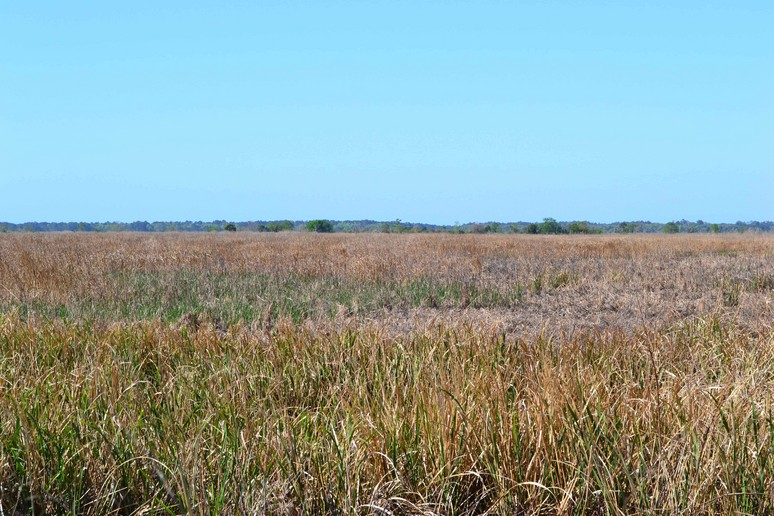
The first views across the old rice fields to the upland south of the South Santee River were spectacular, and the farther east I walked along this dike paralleling the North Santee River the farther away I got from the Highway 17 traffic noise.
The Hwy 17 Santee Bridges have hidden that fact that the Delta is an island – in fact, a number of islands. The one I walked on this day was historically known as Lynch’s Island, and the raised roadbed across the wetlands Lynch’s Causeway. The Lynch family contributed to the transformation of this area from wilderness to rice plantation economy.
Sounds of nature brought the walk alive: squawks of birds, splashes (small and large) of alligators, leaves and reeds rustling in the increasing wind. The names of the various rice fields on the Santee Delta WMA map were entertaining: Garfish, Tearthumb, Bill’s Pond, No Man’s Land, Gator Weed, Cookie Cutter. By a major water control structure, I walked out on one of the cross dikes to get a closer look at a large group of glossy ibis.
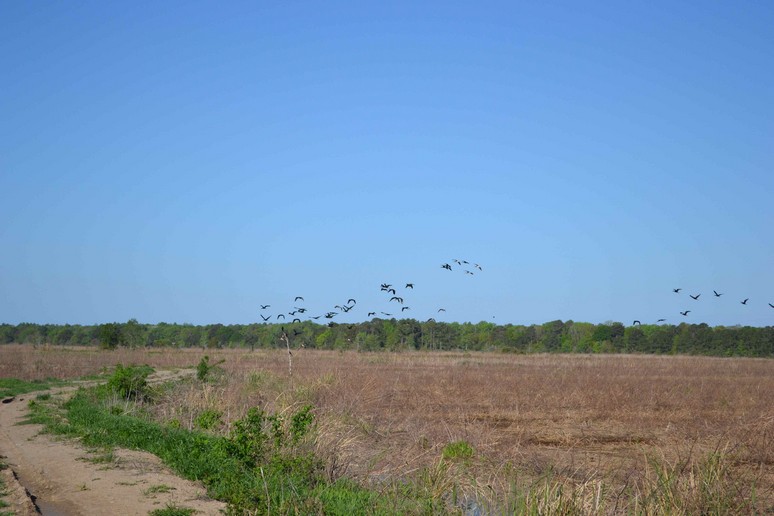
A canal exploded with the crash of a large basking alligator. As I returned to continue the walk along the perimeter dike, I ran into a DNR truck. The truck was occupied by four men, and was driven by Gilbert, a young DNR employee and resident of McClellanville I met several years before on Murphy Island. They were surveying the dikes for repairs needed, and later in the season would be planting chuva and millet. I asked about feral hogs, and he allayed my concerns.
Returning along the walk I heard a loud splash behind from one of the parallel canals, and saw an osprey fly out and up with a fish in its talons.
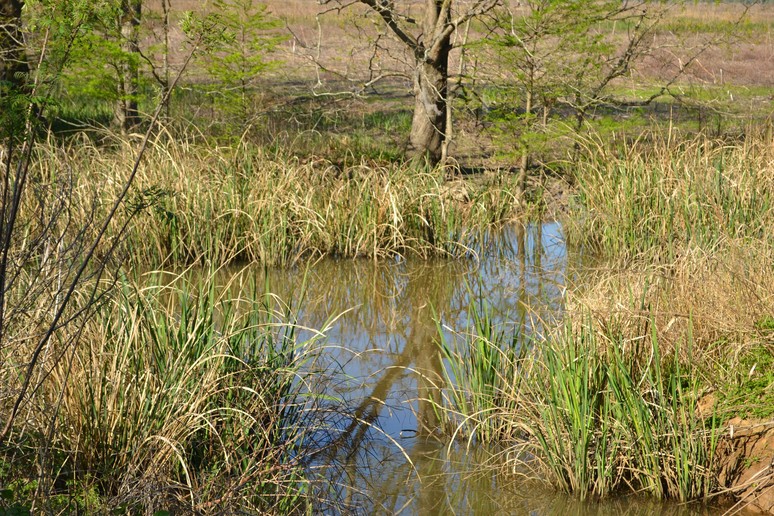
Farther along, another osprey dove in the same spot in the canal. I ventured off the beaten trail of the dike to step down and walk through the brush over to the river.
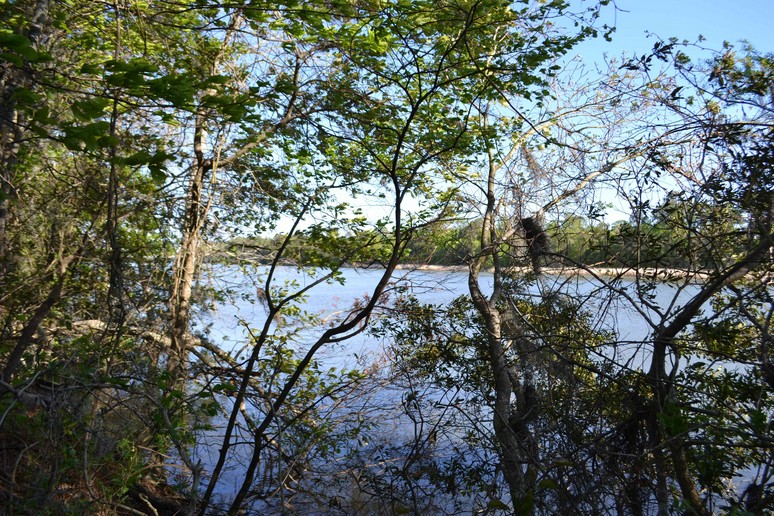
Several beautiful loblolly pines rose along the bank and wore garlands of Spanish moss. I recalled my sail past here in 2007 on the way to Charleston Harbor via the Inland Passage. Returning to the dike, and ready to scurry up the brush-covered slope, I crossed paths with a king snake.
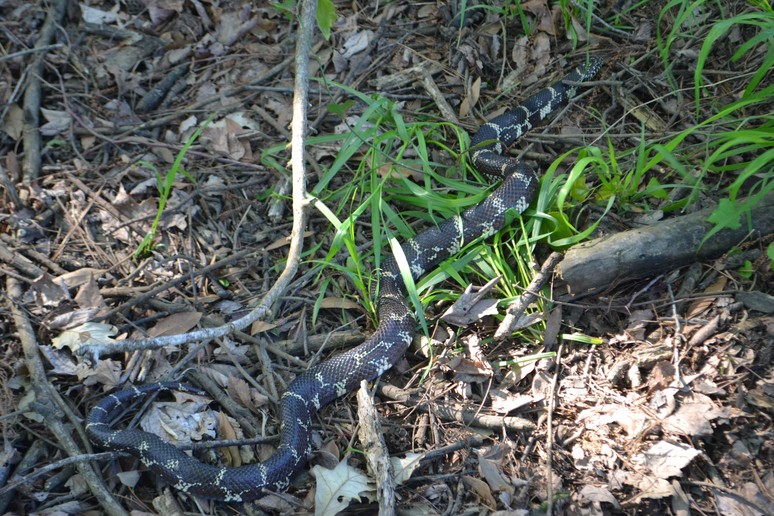
It was a beautiful reptile, with the distinctive coloring of these predators that count snakes among their prey. It communicated alarm at my proximity and interest with the vibration of its tail.
Continuing east along the dike, there were signs of large animals – many black dung piles. Running into the DNR guys again, Gilbert informed me that these were hog feces. Impressive, though I would not see a hog this day. I arrived at a trunk at Bridge Pond field, looking out to the bend of the North Santee.
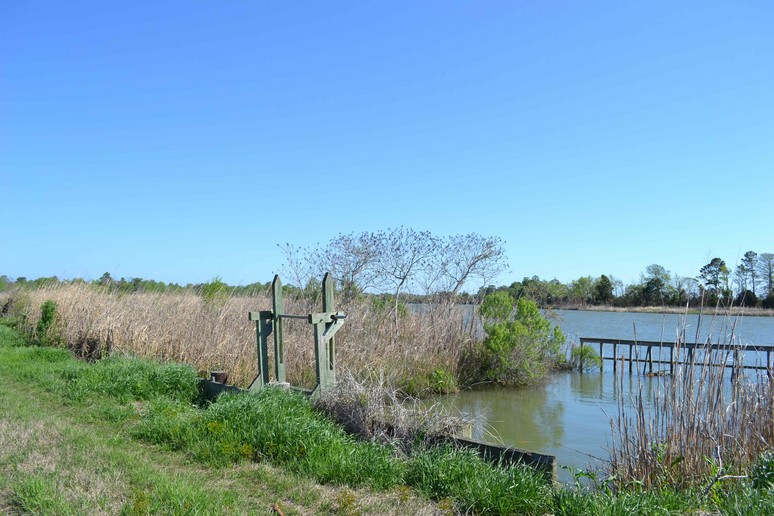
Beyond, I checked out a path leading across a narrow canal onto private property, but returned to the WMA dike, walking around the eastern end where the dike parallels Six Mile Creek. Near Roy’s Pond field, a stand of chinaberry trees separated the dike from the creek, with the interior canal paralleling the dike.
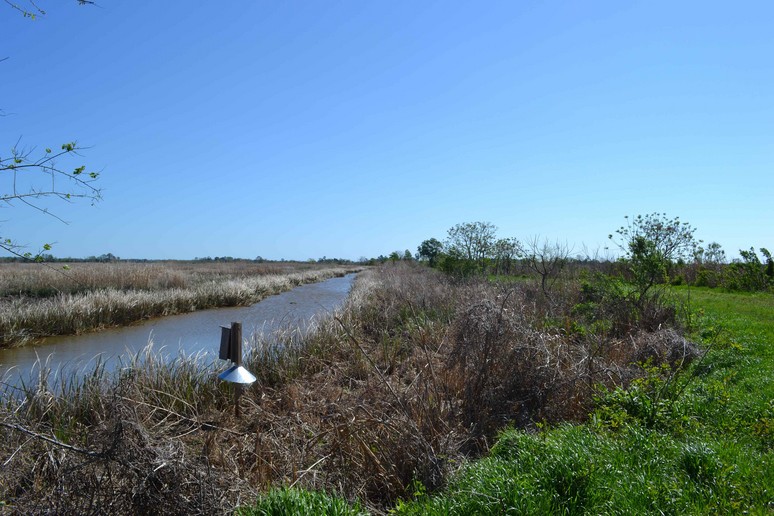
There was a large bend in the creek, with the dike also making these turns and skirting the appropriately named Big Bend field.
All along the dike the views across the low rice fields were spectacular in the clear blue sky. I imagined this historic scene during active rice cultivation.
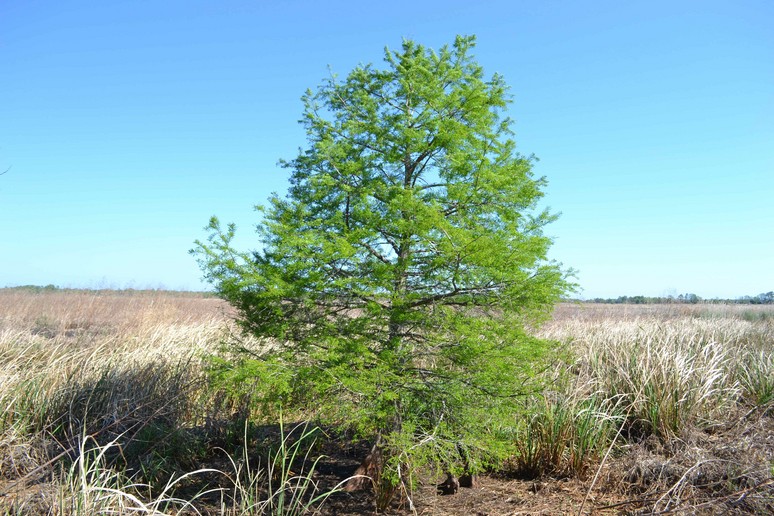
In places the new green of single cypress trees stood out against the brown of the fields. By a stand of cedar and hackberry trees on the dike, the large brown body of a great horned owl flew across my path within twenty feet, and beat across the fields until landing on a solitary tree a quarter mile away.
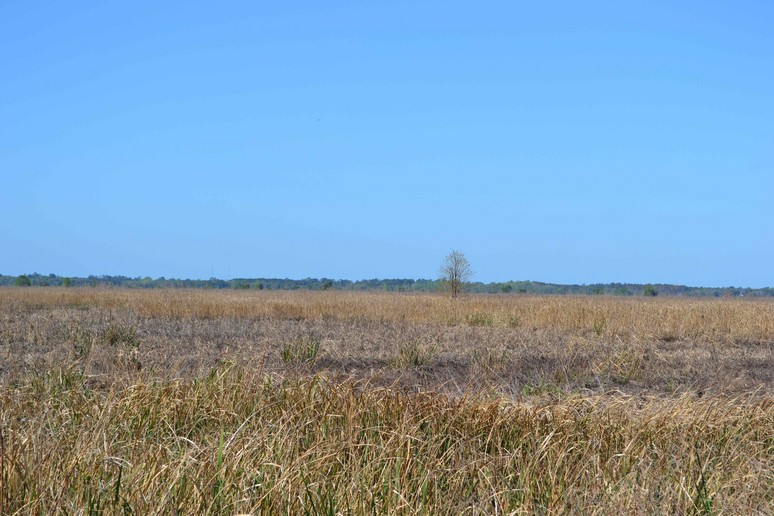
Alligators continued to be very skittish: a small solitary one held its place on the bank, and its cohorts eyed me from the canal. A brown water snake laid coiled on the dike, but a closer look showed ants not just all around but also on this animal.
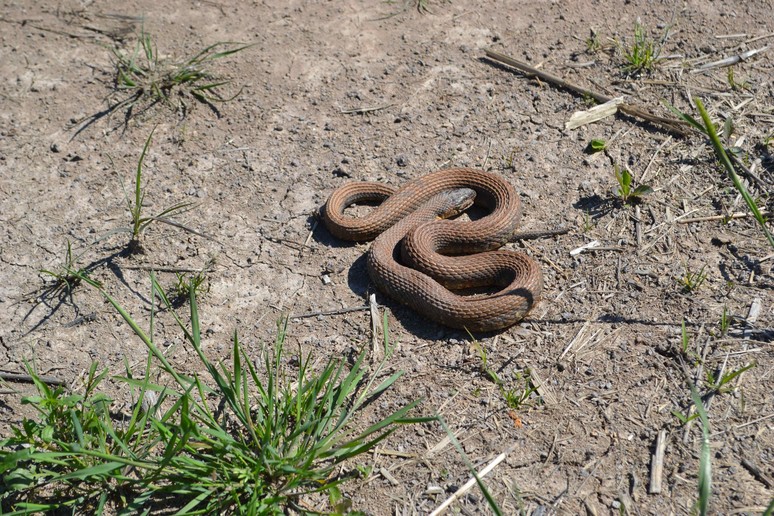
A prod with the stick did not stimulate movement, and was further evidence of the snake’s demise.
After one last curve in the dike, a straight run led back to Hwy 17 a little south of the parking lot. The creek continued to narrow alongside the dike, and the barrier of the highway causeway loomed ahead. Another section of this WMA was laid out on the west side of the highway, but I did not walk those dikes on this day. That walk, and sailing voyages imagined, would have to wait.